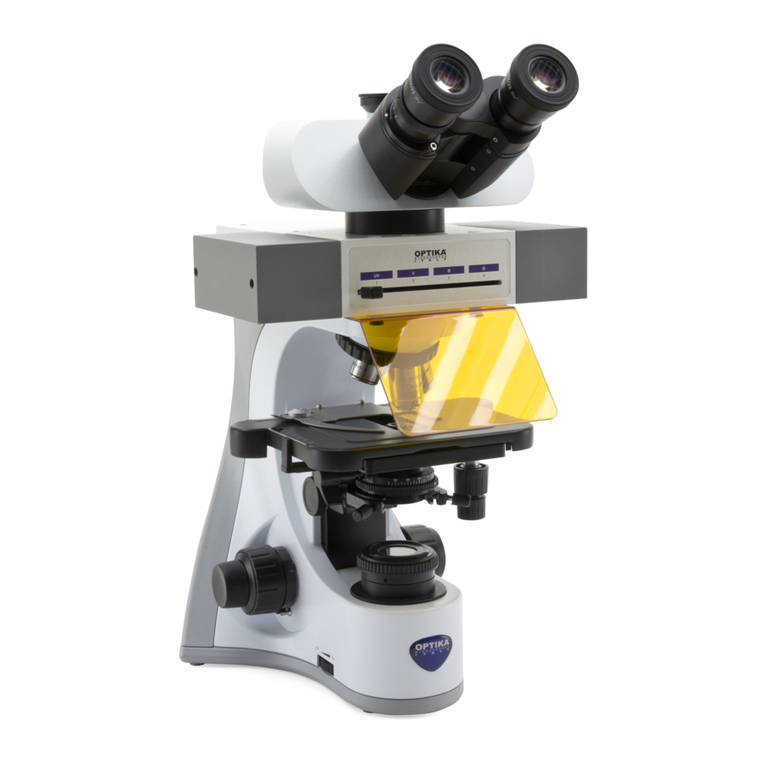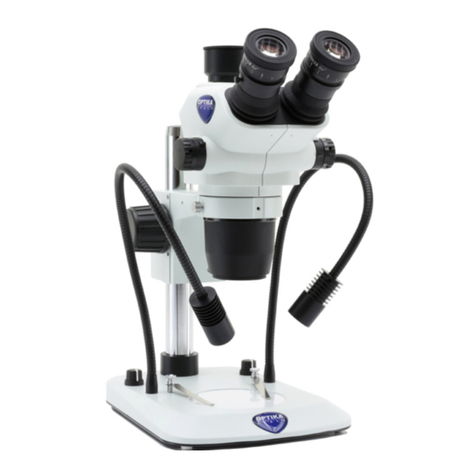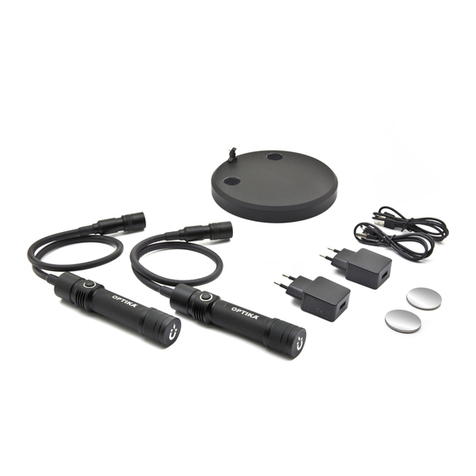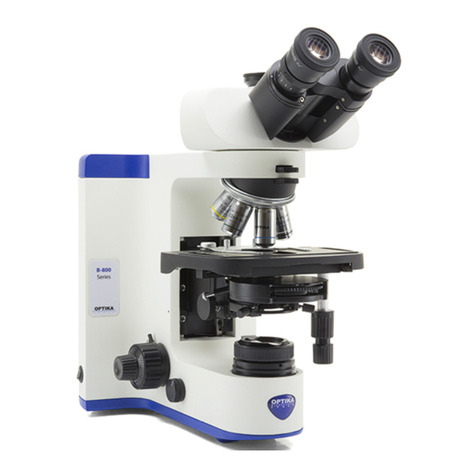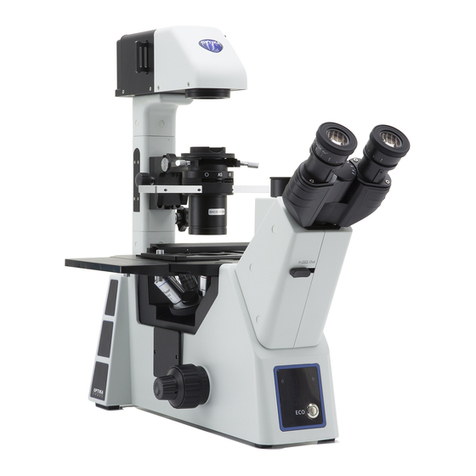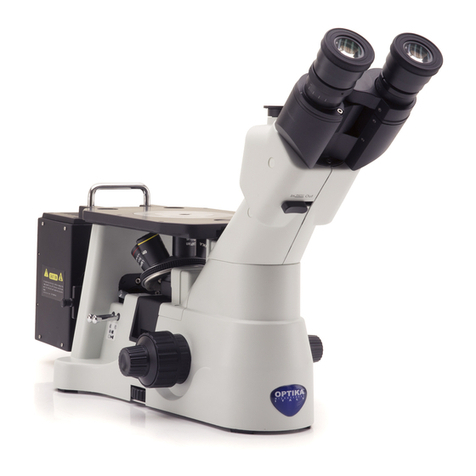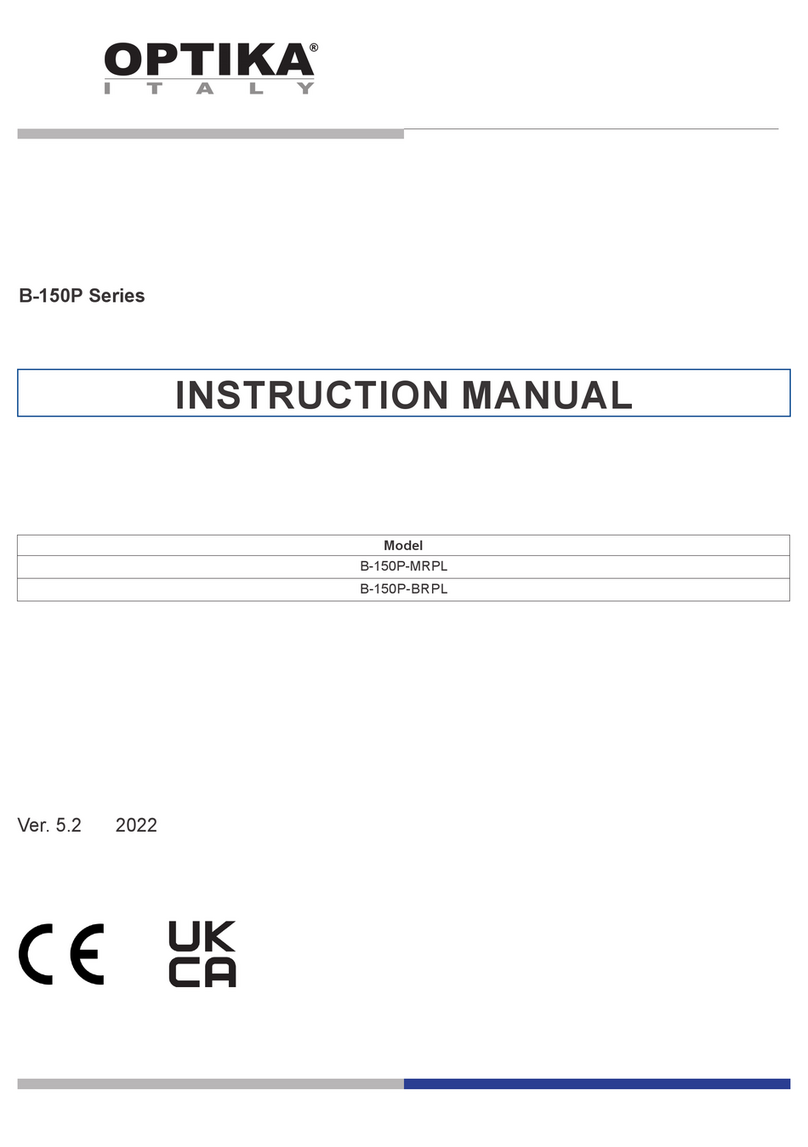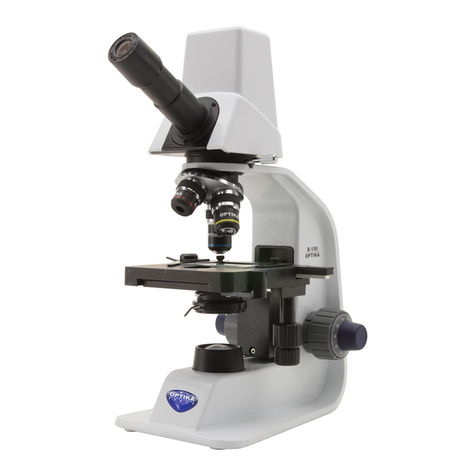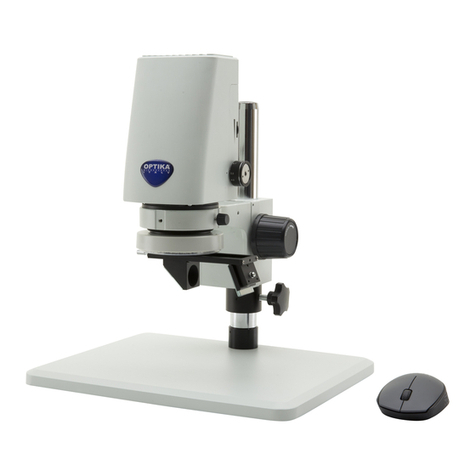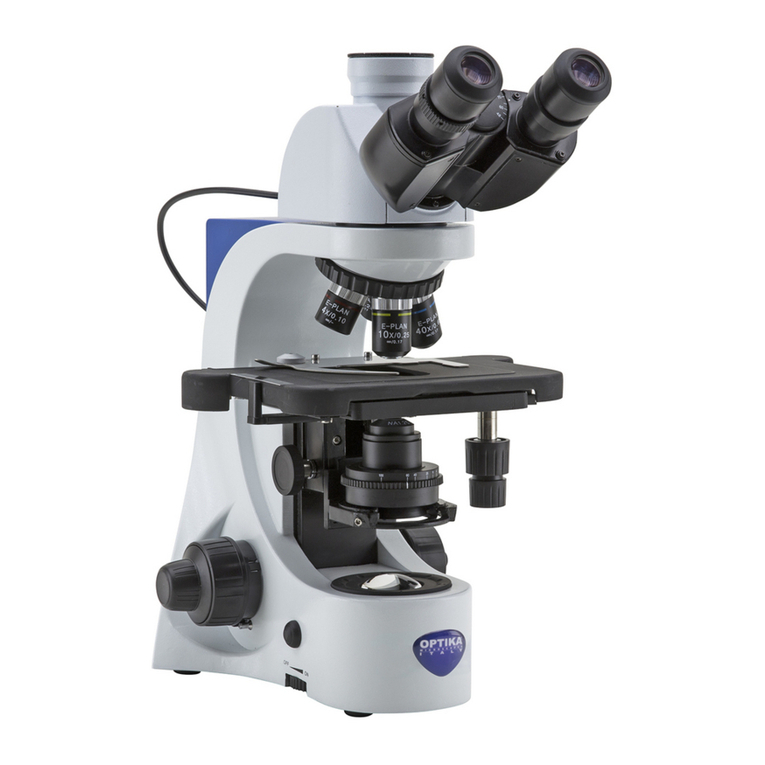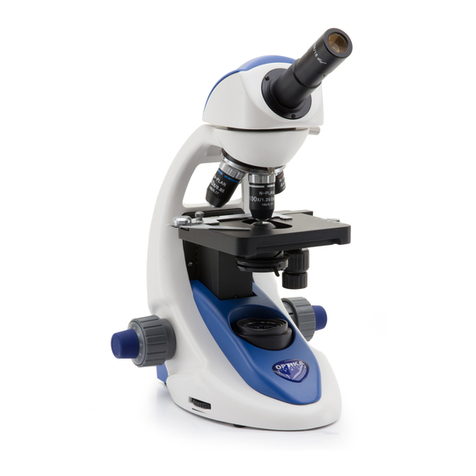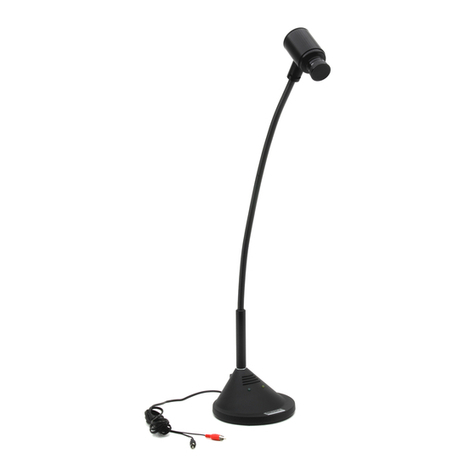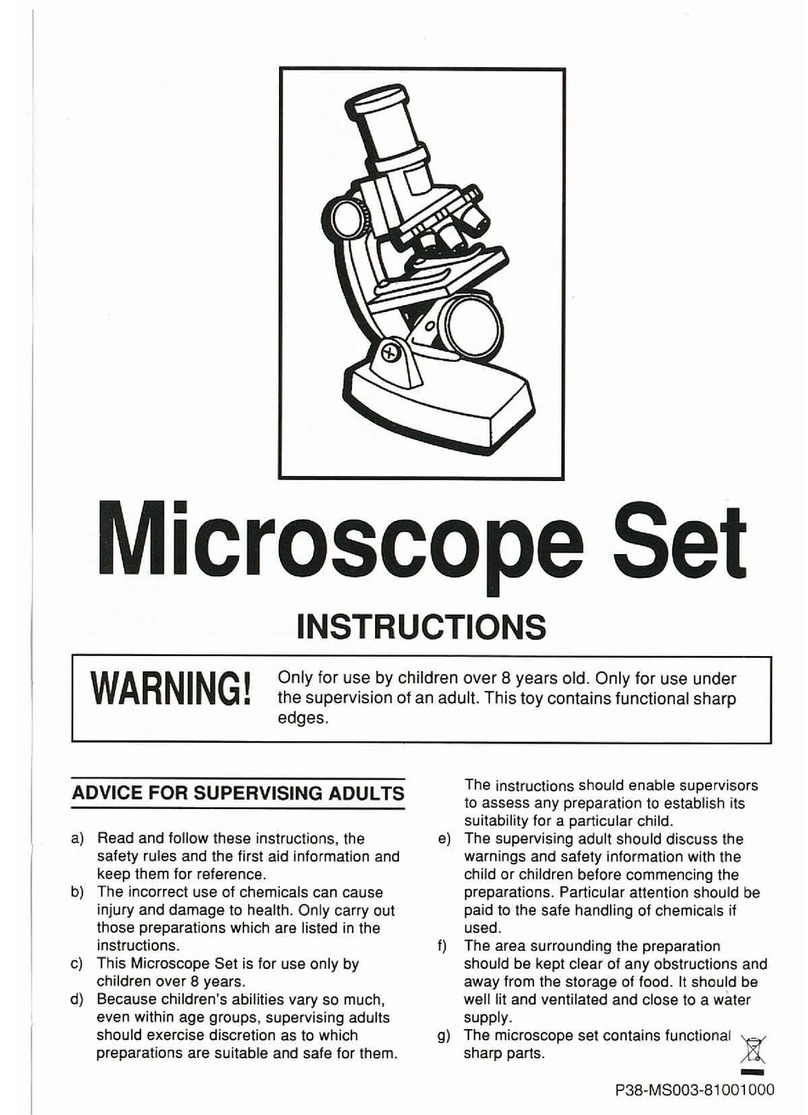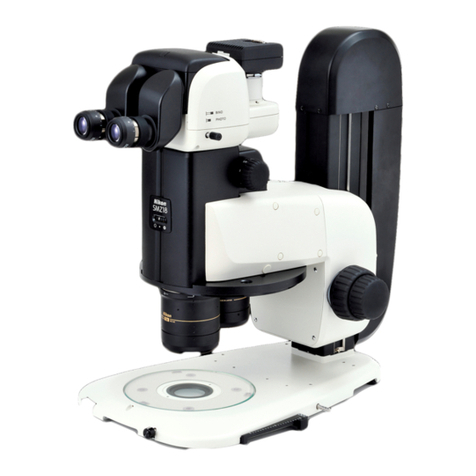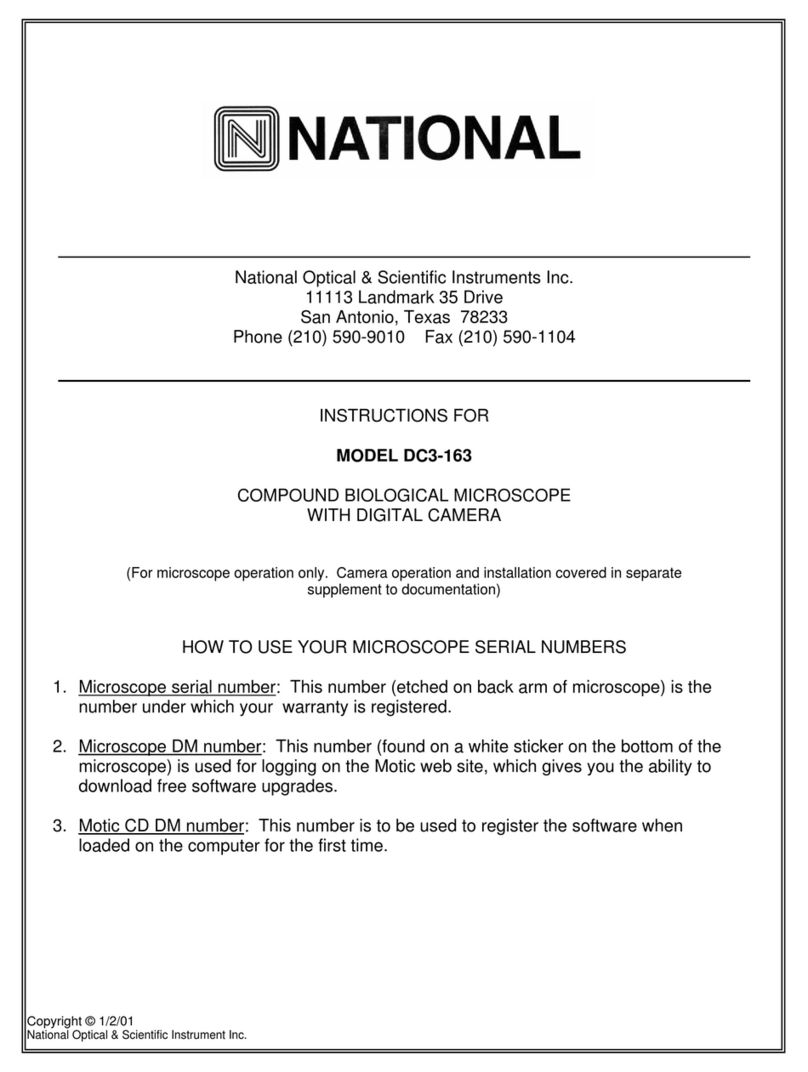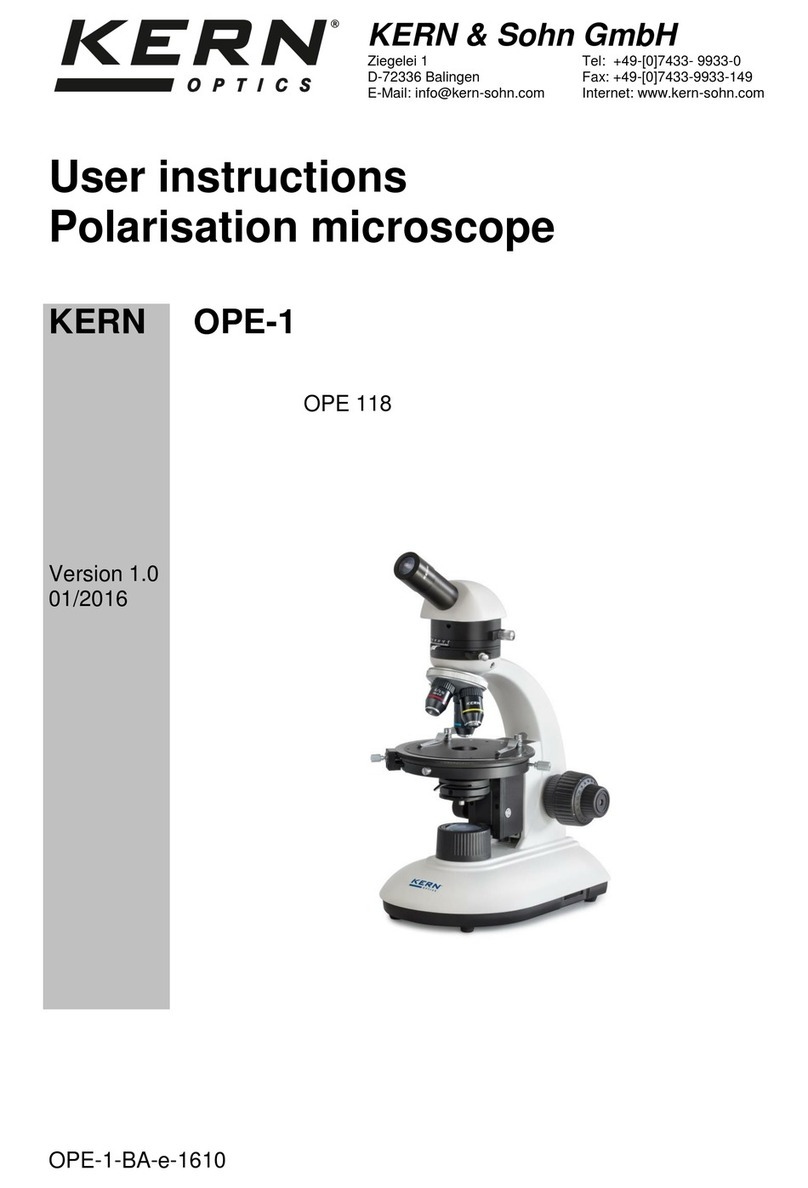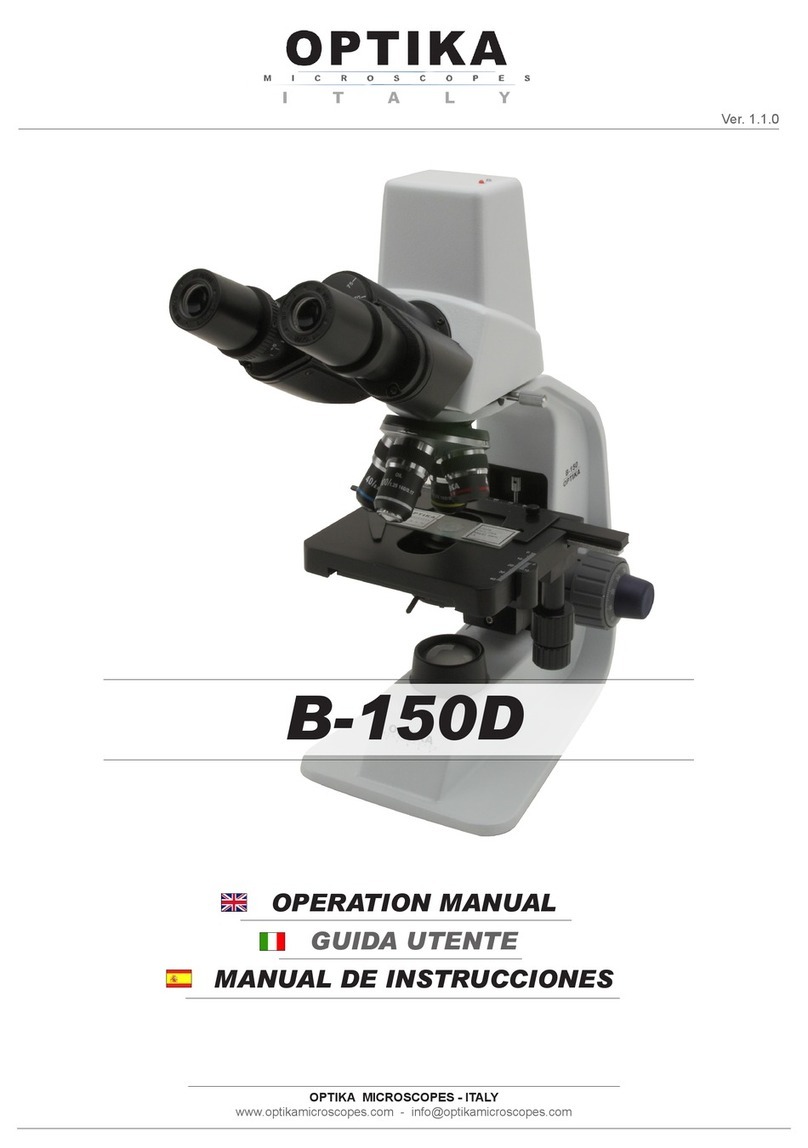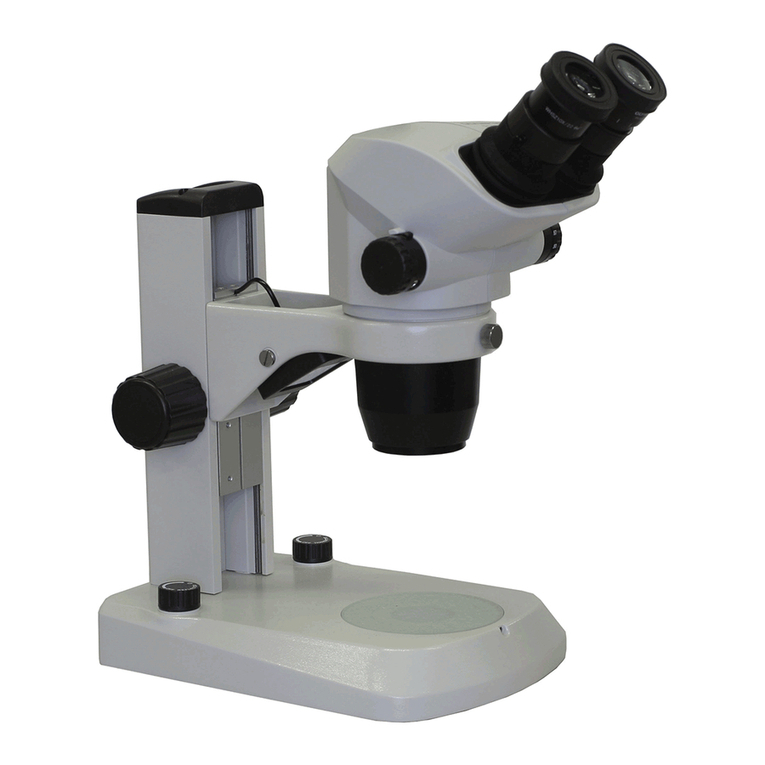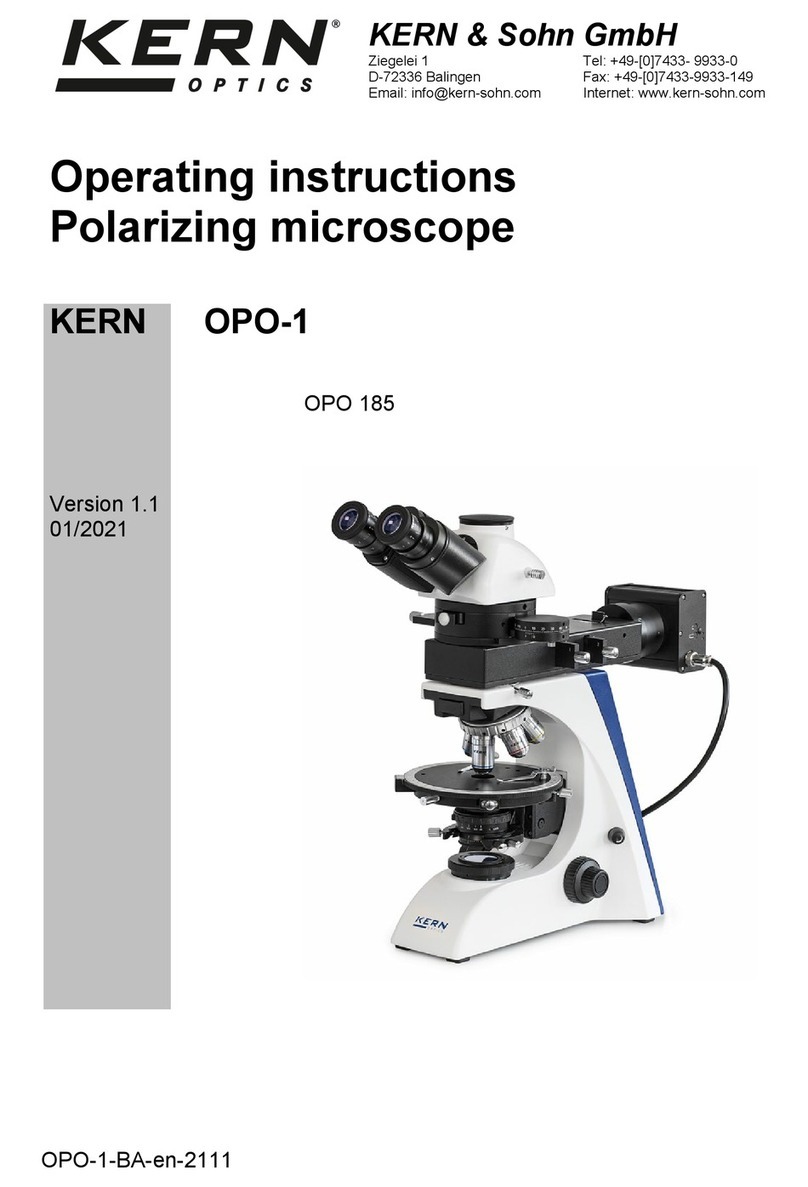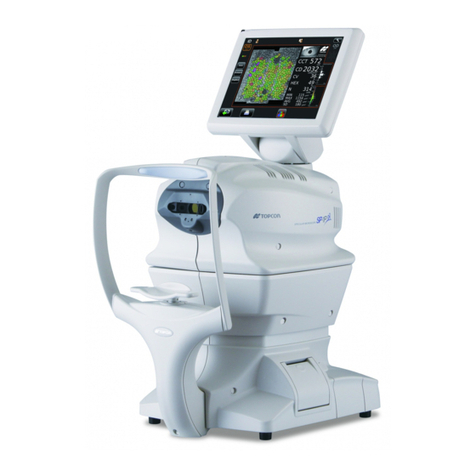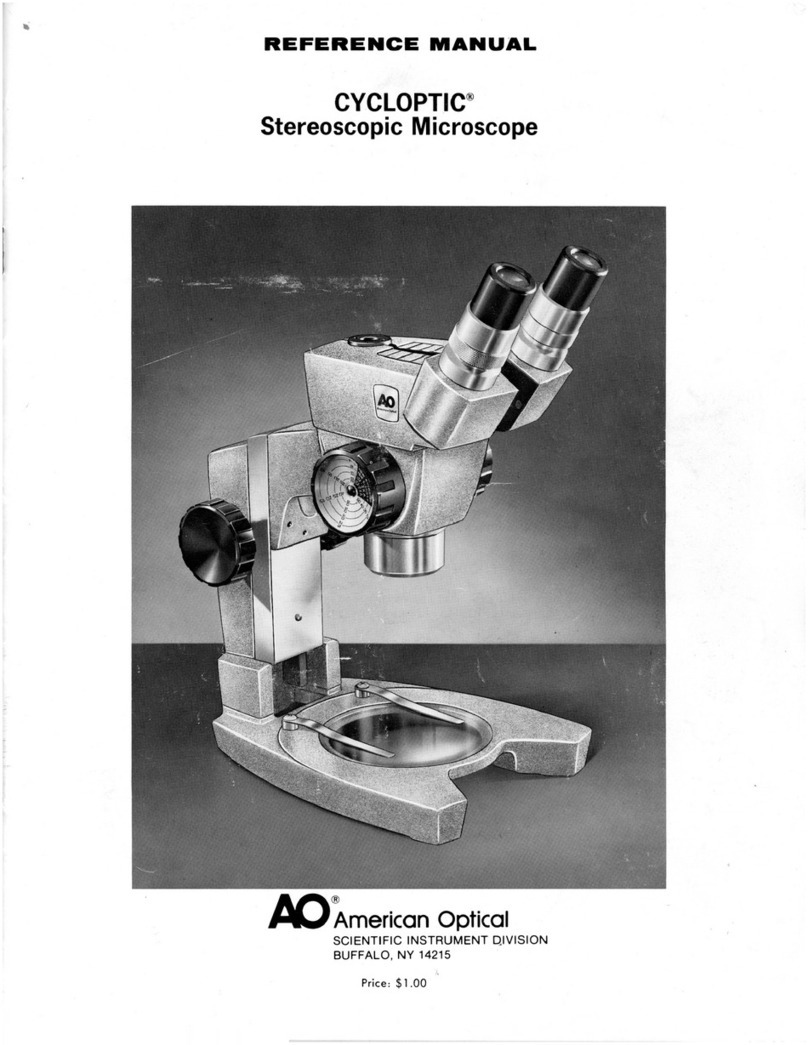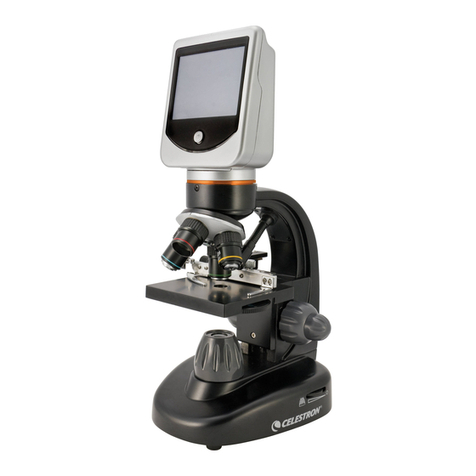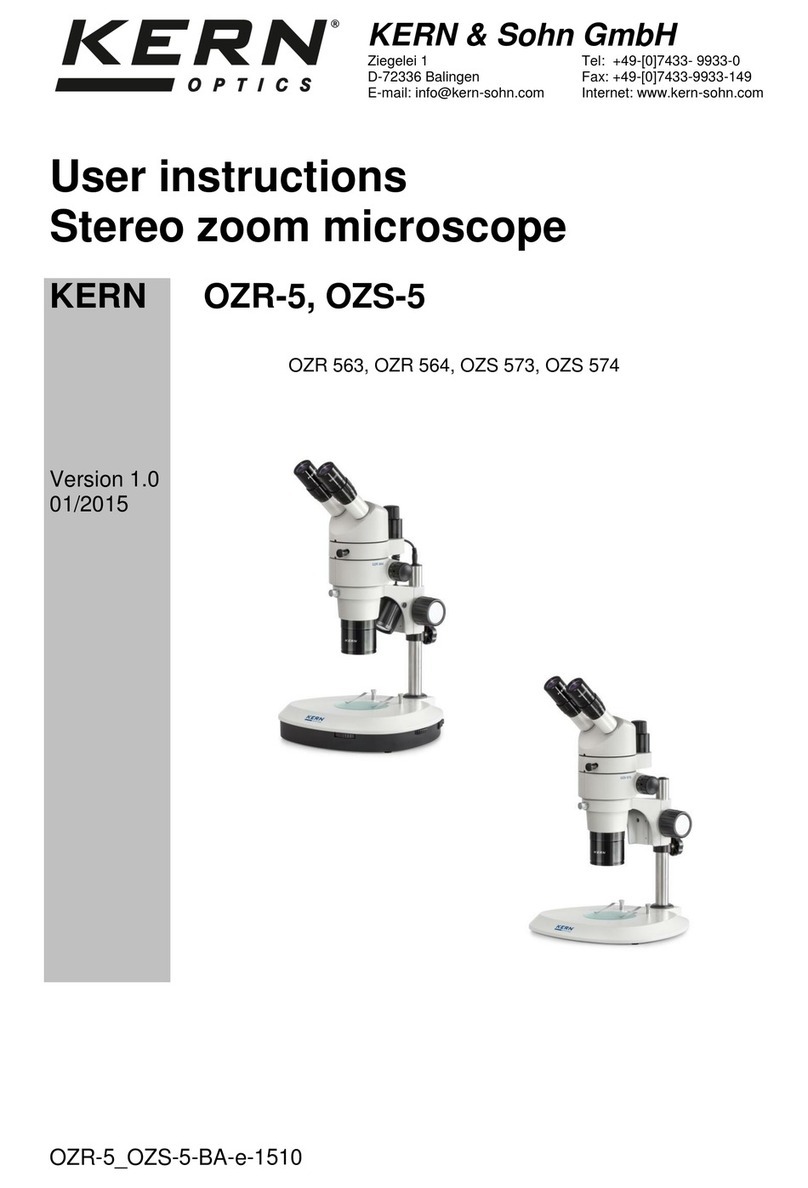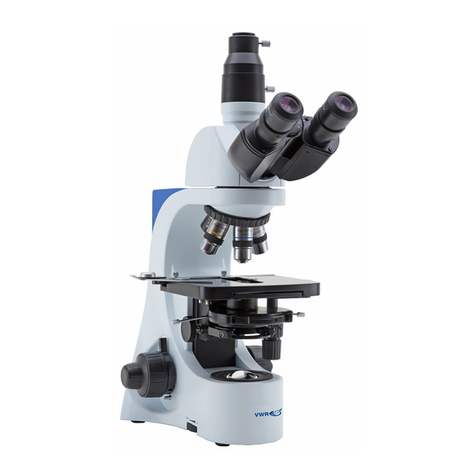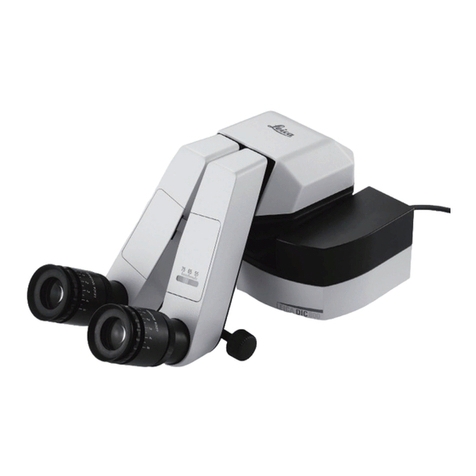
Page 10
Troubleshooting
Review the information in the table below to troubleshoot operating problems.
PROBLEM CAUSE SOLUTION
I. Optical Section:
The illumination is ON, but the eld of
view is dark.
The plug is not connected to the il-
lumination
Connect the cable
The brightness is too low Adjust to a proper setting
The edge of the eld of view is
vignetted or the brightness is
asymmetric.
The incident illuminator is not cor-
rectly oriented
Change the angle of the incident illuminator
Dust and stains can be seen in the
eld of view.
There are stains and dust on the
specimen
Clean the specimen
There are stains and dust on the
eyepiece
Clean the eyepiece
Poor image quality:
The image is not sharp
The contrast is not high
The details are not clear
The lenses (condenser, objective,
eyepieces is dirty
Thoroughly clean all the optical system
One side of the image is out of focus. The specimen is out of place (tilted) Place the specimen at on the stage.
II. Mechanical Section:
The coarse focus knob is hard to
turn.
The tension adjustment collar is too
tight
Loosen the tension adjustment collar
The focus is unstable. The tension adjustment collar is too
loose
Tighten the tension adjustment collar
III. Electric section:
The LED doesn’t turn on. No power supply Check the power cord connection
The brightness is not enough The brightness adjustment is low Adjust the brightness
The light blinks The power cord is poorly connected Check the power cord
IV. Viewing tube assembly:
The eld of view of the two eyes is
dierent
The interpupillar distance is not cor-
rect
Adjust the interpupillar distance
The dioptric correction is not right Adjust the dioptric correction
The viewing technique is not cor-
rect, and the operator is straining the
eyesight
When look into the objective, do not stare
at the specimen but look at the whole eld
of view. Periodically, move the eyes away
to look at a distant object, then back into
the objective
V. Microphotography and video:
The image is unfocused Incorrect focussing Adjusting the focus system as in the
present manual
The edge of the image is unfocussed To some degree, it is inherent to the
nature of achromatic objectives
The problem can be minimized by a correct
setting of the aperture diaphragm
Bright patches appear on the image Stray light is entering the microscope
through the eyepieces and through
the camera viewnder
Cover the eyepieces and the viewnder
with a dark cloth


